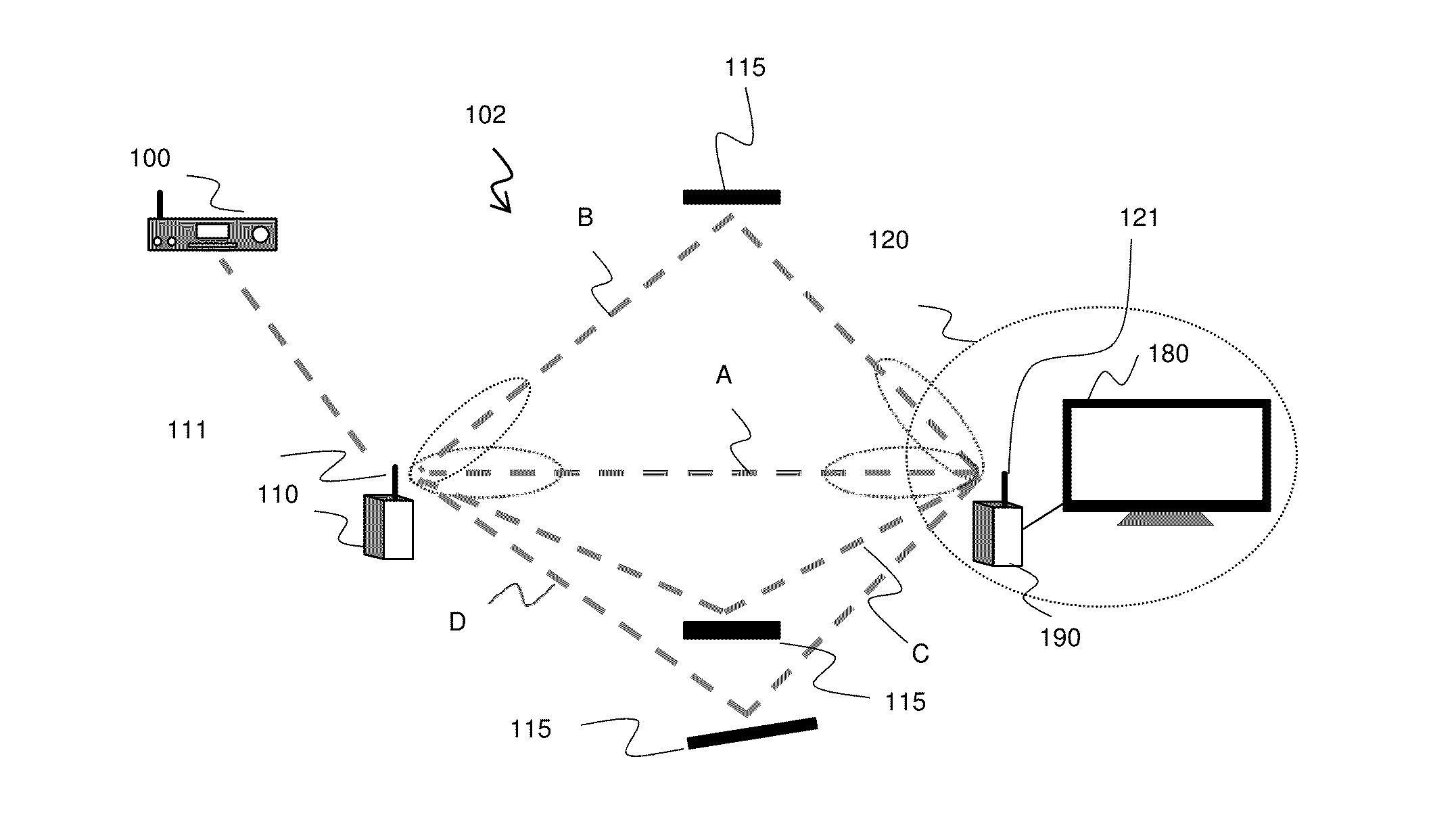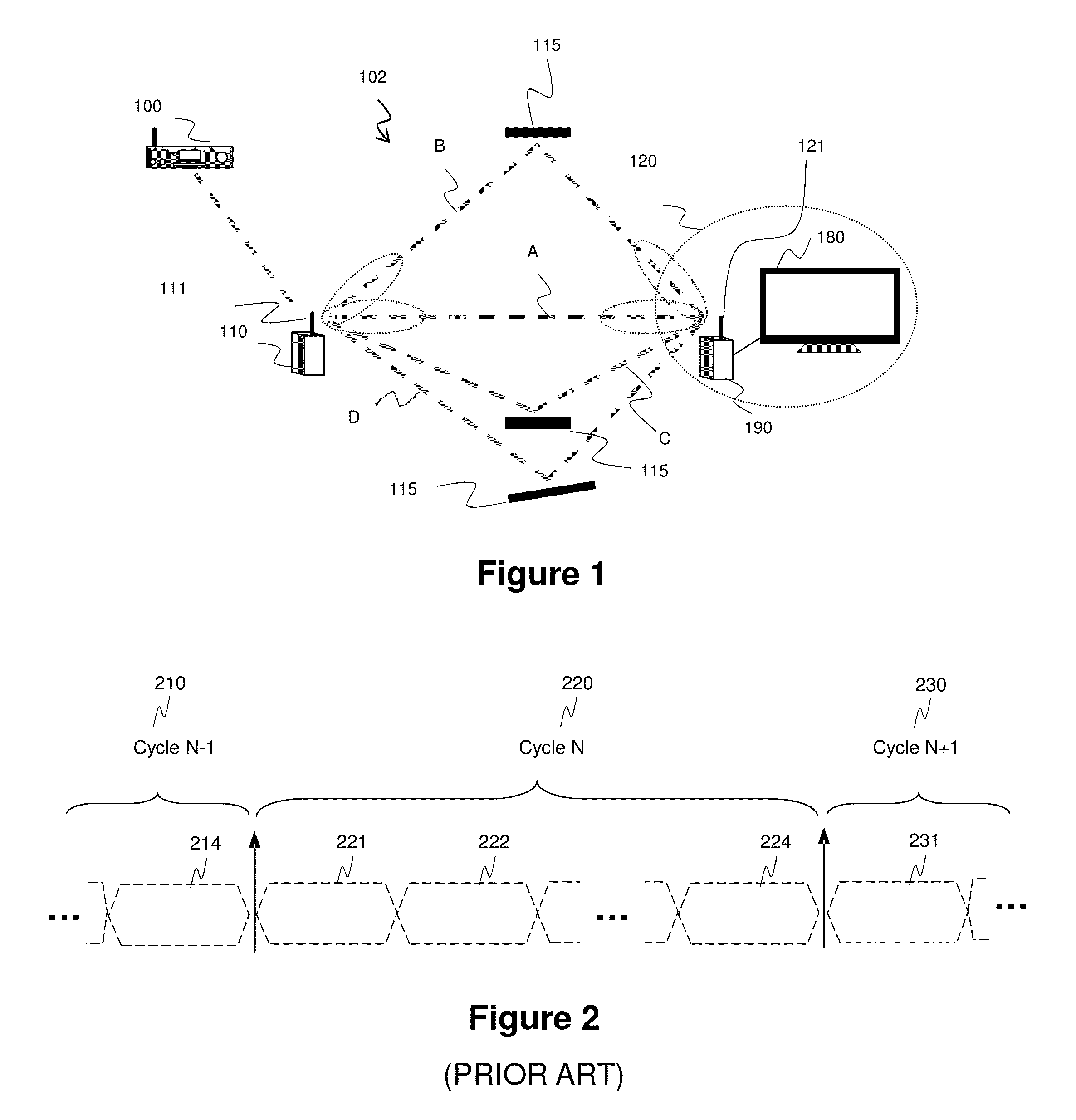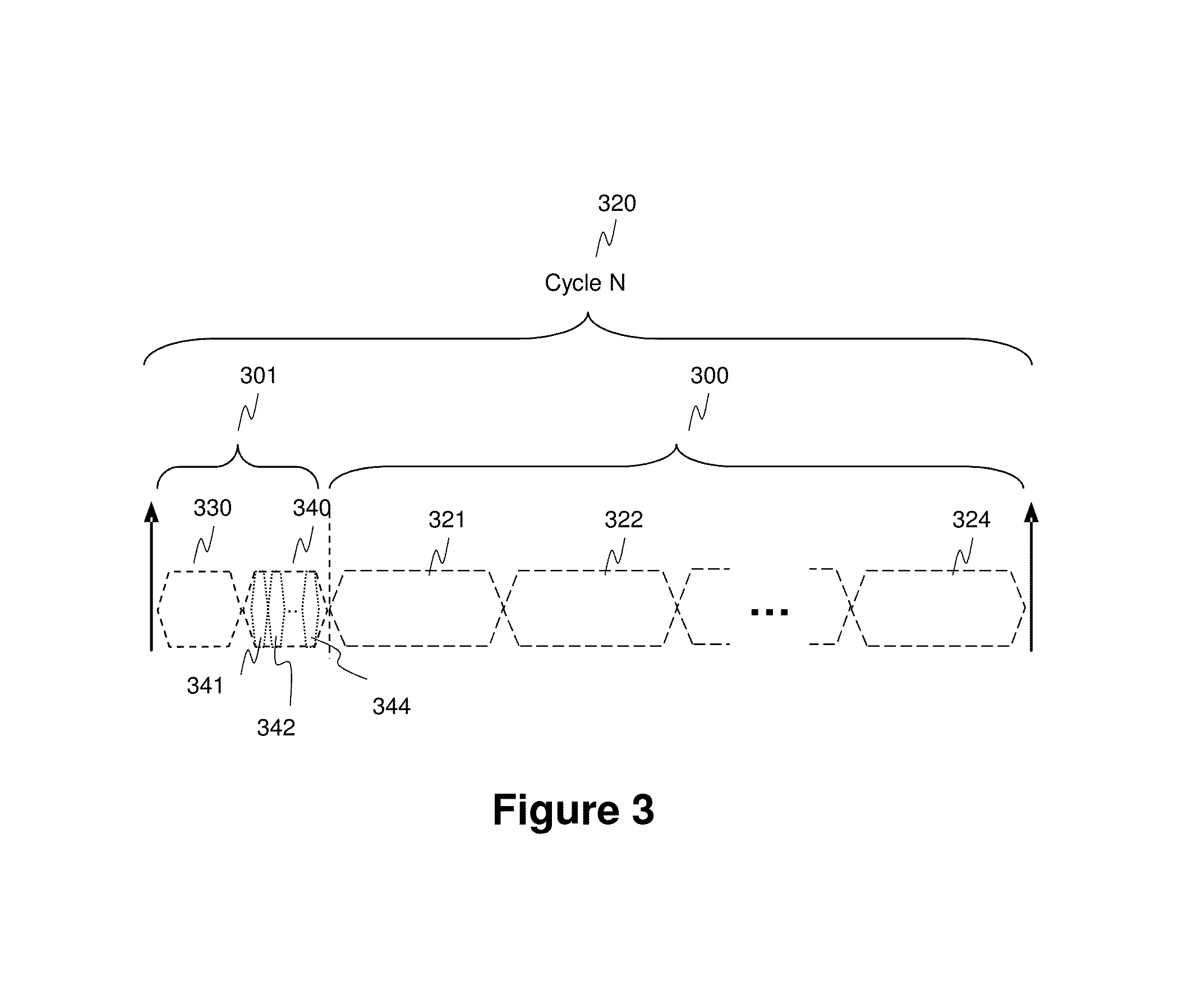Methods and devices for transmitting and receiving data signals in a wireless network over a plurality of transmission paths
a wireless network and transmission path technology, applied in the field of wireless communication, can solve the problems of difficult implementation of searching for/updating the set of all possible transmission paths, associate a reliable transmission, and inability to quickly determine etc., to achieve the highest level of reception quality, increase spatial diversity, and quickly check the validity of transmission paths
- Summary
- Abstract
- Description
- Claims
- Application Information
AI Technical Summary
Benefits of technology
Problems solved by technology
Method used
Image
Examples
Embodiment Construction
[0084]The invention is described, in at least one of its embodiments, by considering the example of the wireless network of FIG. 1. In this wireless network, first device 110 represents the data source node and second device 120 represents the data destination node. The invention is of course not limited to this particular example and may apply to any number of pairs of communicating devices. The invention is also applicable if the first device 110 is acting as a data relay node.
[0085]FIG. 3 illustrates a TDM scheme that is used for implementing an embodiment of the invention.
[0086]Time domain is divided into a plurality of successive network cycles 320 (N, N+1, . . . ) (they can also be referred to as frames). The start of a cycle is signaled to all devices of the network by a beacon signal emitted by a central device (master) that can be a distinct device or one of the communication devices 100, 110 or 120. Each communication cycle 320 is further divided into a configuration perio...
PUM
 Login to View More
Login to View More Abstract
Description
Claims
Application Information
 Login to View More
Login to View More - R&D
- Intellectual Property
- Life Sciences
- Materials
- Tech Scout
- Unparalleled Data Quality
- Higher Quality Content
- 60% Fewer Hallucinations
Browse by: Latest US Patents, China's latest patents, Technical Efficacy Thesaurus, Application Domain, Technology Topic, Popular Technical Reports.
© 2025 PatSnap. All rights reserved.Legal|Privacy policy|Modern Slavery Act Transparency Statement|Sitemap|About US| Contact US: help@patsnap.com



